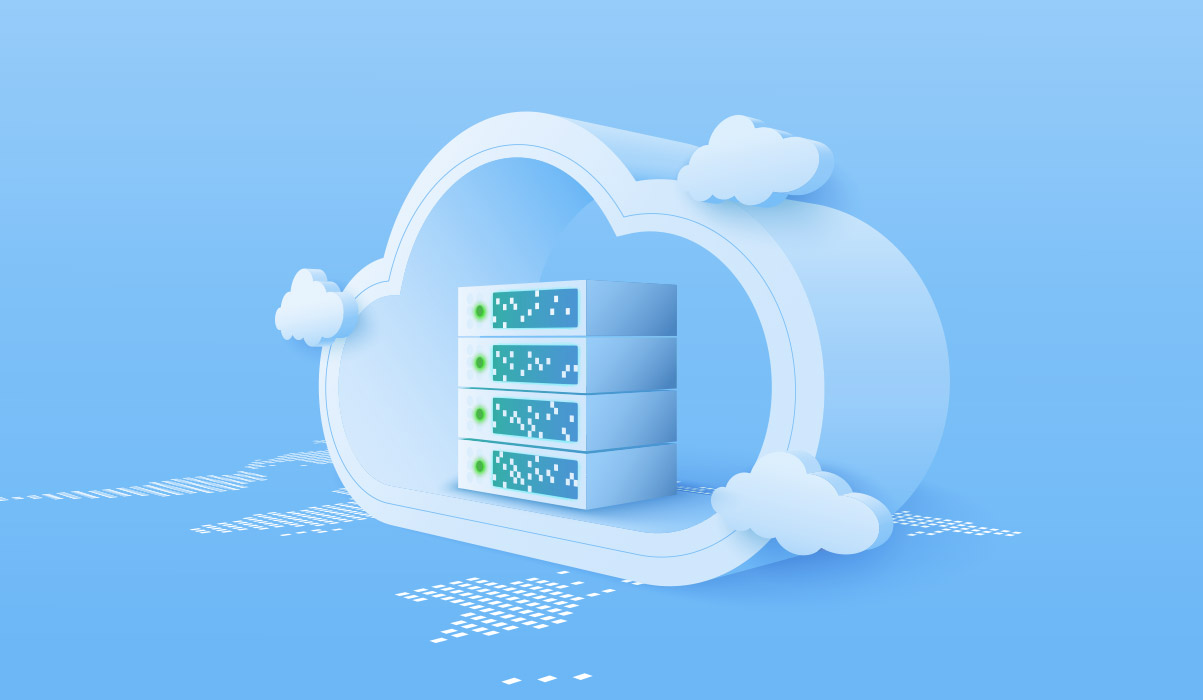Guide To Evolving Your Enterprise Data Warehouse
- 5 minutes read
Think about the workflows and processes in your organization. Almost all of them depend on data. It follows that almost any organizational process also can be improved through the availability of more and better data. Data can be used within a process to identify new opportunities, drive out inefficiencies, or mitigate risks.

Every organization has numerous business processes, and each one has specific data requirements. Optimizing the performance of each process requires even more data. Eventually, the very act of gathering, managing, and delivering all that data to the people who need it becomes a challenge. This is especially true when your enterprise is growing, either organically or through M&A activity.
But people are resourceful. They will find ways to thrive. They will use spreadsheets, email, and knowledge bases. They will introduce checklists, notifications, and best practices. These tactics, however, are specific to individual processes, or individual departments.
Eventually, a modern enterprise will need to address its data needs in a holistic manner. This guide will walk you through the common pain points that organizations experience – and how to set up an enterprise data warehouse to support your data operations journey at every stage.
The Inefficiency of Siloed Data
Most enterprise data resides in silos. Your finance system, enterprise resource planning (ERP) system, and customer relationship management (CRM) system all store data in their separate platforms. While this data is useful to the people with access to the system, many decisions require analysis using data across the organization. For instance, people trying to make decisions on staffing, inventory, and project deadlines may not have access to critical data stored in the finance system.
The easiest way to circumvent this problem is by creating reports. Data-driven individuals send these reports to various stakeholders on a daily, weekly, or monthly basis. This, however, only shifts the problem to the individual business units, who then must spend time collating finance or customer data into their own data. This approach is not ideal, as it distracts business units from doing their actual jobs and increases the likelihood of errors in the data collation process.
One way to overcome the challenge of data silos and integrate data from multiple sources is to build an enterprise-level Data Lake. The data lake acts as a centralized repository for data from different systems within the organization, including finance, HR, sales, and operations. You will load your data in its original format into the data lake on a regular basis, usually daily, making the creation of the data lake relatively simple.
Interpreting the data in a data lake can be challenging, however, since the data exists in several separate data models. There may be no direct mapping across your data sources, making it difficult to link, for instance, a client in the CRM system to the same client in the billing system.
To make the data in the data lake more accessible to users, you will want to set up an Analytics Database. This can be a relational/SQL database, such as MS SQL Server, a schema-less database, such as MongoDB, or a graph database, such as neo4j. Unlike operational databases, an analytics database is optimized for large data reads rather than individual record updates. Performance tuning, such as indexing, is handled automatically in an analytics database.
One other benefit of an analytics database is simplifying control over who can access your enterprise data. By funneling all data requests through the analytics database, you can provide access to your enterprise data through a single data platform, instead of dealing with access to individual systems. You can also control access at the table or row level, aligned with standard business practices.
By joining all your data from various systems in a single analytics database, users who are familiar with SQL or JSON can query the data they need and join it with other data sources (with some effort and sufficient expertise). However, differences in entity naming, or primary keys, may prevent the easy comparison of data across data models. Similarly, nuances such as data granularity or how changes are handled in each data model may prevent an apples-to-apples comparison between data sets. For this, your enterprise will need to implement a Cloud Data Warehouse.
Analytics databases include Amazon Redshift, Microsoft Azure Synapse Analytics, Google BigQuery, and Snowflake Cloud Data Platform.
Standardize Data Inside a Cloud Data Warehouse
While a Data Lake can help avoid siloing, querying that data through an analytics database is merely a starting point. An improvement on this system is building a Cloud Data Warehouse.
Unlike a Data Lake, which ingests data as is, a Cloud Data Warehouse transforms data into a structure that is easier for business users to recognize and consume. The Cloud Data Warehouse standardizes naming, flattens the data model, and collates entities common across departments into a single set of tables using MDM (Master Data Management).
The transformations performed for the Cloud Data Warehouse allow the seamless integration of data across different domains. For instance, you can:
- Join client data from your CRM system with the same client in your billing system
- Combine product data from your product catalog with the same data in sales ledgers
Thus, a Cloud Data Warehouse provides a single version of the truth across all departments, ensuring that everyone in the enterprise has a clearer picture of reality when making decisions. This enables organizations to gain deeper insights into their data and make informed decisions that drive growth and profitability. Equally important, you can improve operational efficiency by enabling cross-functional analysis and reducing the burden on individuals to collate data.
Your Data Lake feeds into your Cloud Data Warehouse daily, maintaining your 360-degree view of data across all systems. Because of the extra cost and complexity involved in transforming the data from the Data Lake to the Cloud Data Warehouse, most organizations include only the most useful and valuable data in their Cloud Data Warehouse, making it a subset of the Data Lake.
Why not just start out with a Cloud Data Warehouse in the first place, instead of building a Data Lake and using an Analytics Database for querying, you might ask?
You could absolutely start out with a Cloud Data Warehouse! However, creating the Cloud Data Warehouse requires effort and business knowledge. Business people need to work with data experts to identify important business entities, their elements, and their granularity. Data experts will likely format the analytics database into a star schema or snowflake schema, which is optimized for large queries typical in an analytics database. You will likely need to change a few business processes along the way, requiring some change management within the organization. Thus, you gain faster time-to-value by starting out with a Data Lake.
In addition, you might later decide that some data in your Data Lake is indeed worthy of inclusion in your Cloud Data Warehouse. Collecting it up front means that it is available for later analysis.
Overall, building a Cloud Data Warehouse is a crucial step in becoming a data-driven organization, as it enables effective data management and analysis, simplified access control, and a clearer picture of reality for better decision-making. Plus, you can leverage the scalability and elasticity of the cloud without incurring a hefty cost.
Build Trust by Improving Data Quality
Unreliable data can erode trust in the organization’s decision-making process. If the data in your Enterprise Data Warehouse is inaccurate, or even perceived as inaccurate, then decision-makers will become skeptical of the data and hesitant to incorporate data-driven insights into their decision-making. This can hinder your organization’s ability to make informed decisions and stay competitive in the marketplace.
Regardless of whether you set up a Data Lake, Cloud Data Warehouse, or both, ensuring some degree of Data Quality is a must. Your overall data strategy should include a plan for implementing data fixes and remediation. Here are a few common data-management strategies to start with:
- Data Validation looks at individual data records to see whether they meet established criteria, such as non-nullable fields, enumerated values, and duplicate records.
- Data Profiling looks at characteristics across an entire data set, such as minimum and maximum values, mean values, standard deviations, record counts, total amounts, etc. This profile data can then be compared between geographic regions, time ranges, and other dimensions to ensure consistency within the overall data set and identify anomalies.
- Data Auditing uses a combination of sensitivity criteria, as well as statistical sampling, to send a subset of data records to an expert to review manually. This can help to identify problems that were not accounted for in the original data platform configuration.
If any of the validation criteria are not met, then you can send the data record to an error pool instead of being published for consumption. Business users can then validate or fix the data in the error pool before it is actually used.
One caveat to consider: In many analytics use cases, Data Stability may actually be a higher priority than data accuracy. That is, your organization may be able to apply analytical or statistical methods to discern patterns and direction in the data, even if the underlying data contains gaps or inaccuracies. So you may prefer to live with some inaccuracies, instead of allowing a data update to destabilize the data set, and possibly upend an analysis effort that may be weeks in the making. Thus, it’s important to balance flexibility with stability in data analytics.
Manage the Movement of Your Data with Automation
While it used to be common for organizations to capture ALL the data from the business in their Data Lake, that can be burdensome and unnecessary. Today, we recommend ingesting the most relevant and valuable data and making it easily consumable by business users.
Even this amount of data, however, can quickly become overwhelming. Therefore, your organizational data strategy must include a healthy dose of automation. Here are a few opportunities where you can use automation to simplify your work:
Moving Data Into and Out of Your Cloud Data WarehouseAutomate the ingestion of data from your data sources into your Data Lake, or from your Data Lake into your Cloud Data Warehouse through data pipeline engineering. You may also employ DataOps to automate the movement of data to a work zone for transformation, and from the work zone into data dashboards such as Power BI or other analytics activation systems.
Managing MetadataThe standard repository for metadata is the Data Catalog. A modern Data Catalog has automated capabilities such as auto-discovery of tables and columns, automatic documentation of data lineage, and even capturing the semantic meaning of the data through AI capabilities or crowd-sourcing. Once captured within the Data Catalog, business users can use the search capabilities and auto-generated documentation to quickly find and understand the data that is critical to their use cases.
Note: While crowd-sourcing is not actually automation, it does help to address the scalability problem of managing large numbers of data sets and should not be overlooked as a valuable capability.
Managing Algorithms or Machine Learning ModelsThe automated handling of ML models is referred to as “MLOps.” MLOps allows your data scientists to automate the retraining, validation, and deployment of trainable ML models or algorithms. This greatly simplifies routine tasks such as updating training data and running challenger/champion tests on new models before deployment.
Continue Evolving Your Data Platform
As you implement your data strategy, you will experience a general increase in demand for your data. Your organization’s needs for data will continue to shift along with changing business dynamics.
This means that you will need to continue to evolve your Cloud Data Warehouse and your data and analytics tech stack. But don’t worry about having to start from square one. As long as you structure your data and metadata appropriately, it should transfer seamlessly from your old system to your new system.
Also, new tools are emerging almost weekly causing disruption in the data space. New tools offer promising and valuable new capabilities. This is an exciting time to be working in the data and analytics space!
CoStrategix is a digital and data solutions provider that specializes in helping organizations navigate their data strategy – from data engineering to data quality and advanced data analytics. Ask us about our complimentary data maturity assessment.
AI Strategy & Solutions – Elevate your business with advanced analytics
Data & Insights – Drive insights that lead to competitive advantage
Product Development – Build platforms that power unique digital capabilities
Platform & Technology Modernization – Modernize for stellar experiences, efficiency, and AI
Related Blog Posts
6 Frameworks To Ensure A Product Market Fit
April 18, 2023
What Are Augmented Analytics? And How to Get Started
April 18, 2023
Reduce the Cost of Development with ML
April 18, 2023
How to Align AI Initiatives with Strategic Goals
April 18, 2023







